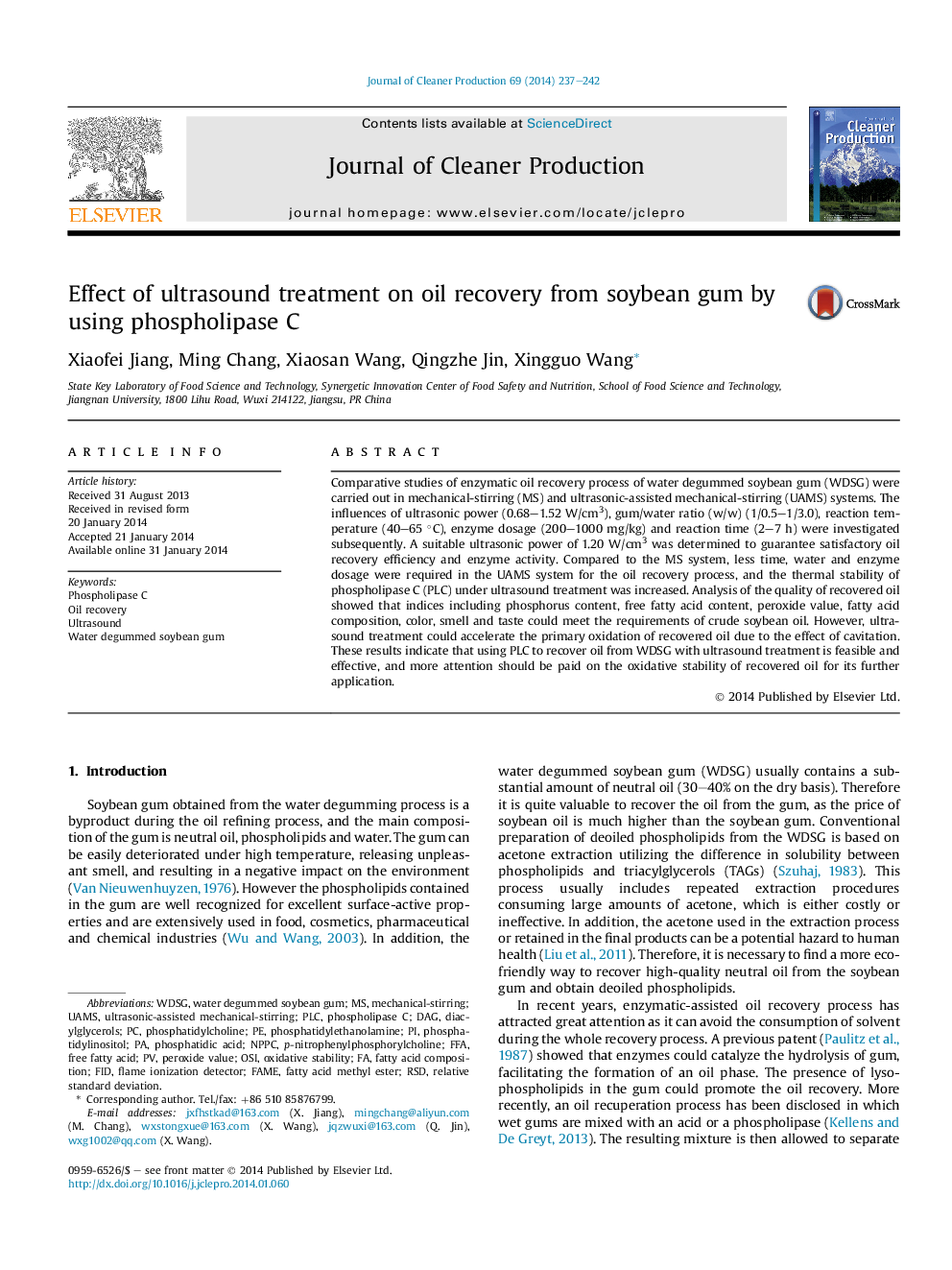| Article ID | Journal | Published Year | Pages | File Type |
|---|---|---|---|---|
| 1745068 | Journal of Cleaner Production | 2014 | 6 Pages |
•Ultrasound was used to optimize the oil recovery process by using phospholipase C.•Less water, time and enzyme were required under the treatment of ultrasound.•Thermal stability of phospholipase C was increased under ultrasonic treatment.•The quality of recovered oil could meet the requirements of crude soybean oil.•Ultrasound could reduce the oxidative stability of recovered oil to some extent.
Comparative studies of enzymatic oil recovery process of water degummed soybean gum (WDSG) were carried out in mechanical-stirring (MS) and ultrasonic-assisted mechanical-stirring (UAMS) systems. The influences of ultrasonic power (0.68–1.52 W/cm3), gum/water ratio (w/w) (1/0.5–1/3.0), reaction temperature (40–65 °C), enzyme dosage (200–1000 mg/kg) and reaction time (2–7 h) were investigated subsequently. A suitable ultrasonic power of 1.20 W/cm3 was determined to guarantee satisfactory oil recovery efficiency and enzyme activity. Compared to the MS system, less time, water and enzyme dosage were required in the UAMS system for the oil recovery process, and the thermal stability of phospholipase C (PLC) under ultrasound treatment was increased. Analysis of the quality of recovered oil showed that indices including phosphorus content, free fatty acid content, peroxide value, fatty acid composition, color, smell and taste could meet the requirements of crude soybean oil. However, ultrasound treatment could accelerate the primary oxidation of recovered oil due to the effect of cavitation. These results indicate that using PLC to recover oil from WDSG with ultrasound treatment is feasible and effective, and more attention should be paid on the oxidative stability of recovered oil for its further application.
